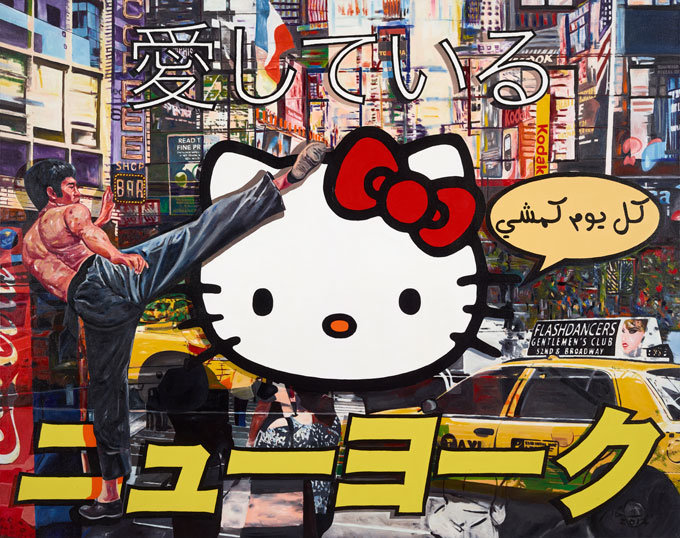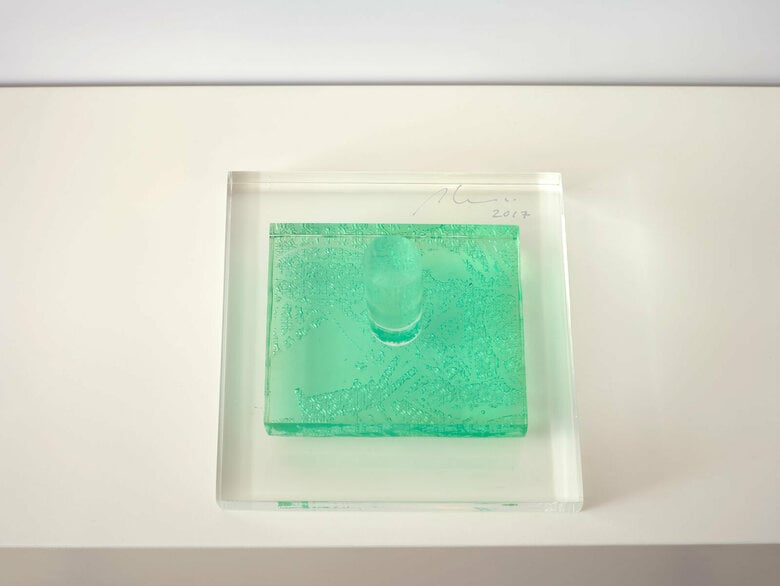New York Mon Amour, 2017, by Lebanese artist Marwan Chamaa is a collage-style artwork that blends pop culture visual elements within an urban landscape. Reflecting his Middle Eastern Neo Pop-Art style, – characterized by its bright colors, high contrast, and use of popular media – Chamaa’s work explores themes of globalization, cultural identity, and the intersection of East and West through his multicultural perspective, which is often infused with irony and irreverence.
In this artwork, the main character, Hello Kitty, a widely recognized fictional cat-like figure by Japanese company Sanrio, represents the country’s pop subculture, which has left a profound impact globally. Hello Kitty emerged in the 1970s when British culture was all the rage in Japan. As a symbol of joy and connection, Hello Kitty stands out against a vibrant cityscape in the painting, teeming with neon signs and advertisements. Bruce Lee, an iconic martial arts figure, who bridged the gap between the East and the West, performs a high kick that converges with Hello Kitty’s head. In the background are the iconic New York yellow taxi cabs, against a backdrop of urban landscape, with recognizable brands, advertisement billboards, and a French flag.
The piece, the title of which is in French, meaning, “New York My Love” incorporates text in Arabic, Chinese, and Japanese. The Arabic text reads “كل يوم كمشي” translates to “Kimchi, every day.” Kimchi, a Korean dish of salted and fermented vegetables, adds another layer of globalized cultural richness to the composition. The Japanese writing spells out “I love you” and “New York”, a popular expression that has been used across media and tourism campaigns.
Chamaa exhibits a keen interest in consumerism, particularly in Western and Eastern contexts. His art delves into consumerism and retro aesthetics, drawing inspiration from the diverse cultural tapestry of New York City itself, as well as global consumerist iconography. This work critiques consumerist desires, while also celebrating them. It reveals the complexities of contemporary culture, where references to global media abound. By incorporating these elements, Chamaa’s work prompts viewers to reflect on their relationship with consumer culture and its impact on identity.
The fusion of cultures, particularly the infiltration of western popular culture in the Far and Middle East, is central to Chamaa’s art. His multicultural upbringing fuels his versatile and eclectic creative approach. Having lived in many parts of the world including Lebanon, USA, and Germany, Chamaa’s experiences give credence to the hyper globalization he portrays.
signed with date in English front lower left



-Front-FW.jpg)
-Front-FW.jpg)



